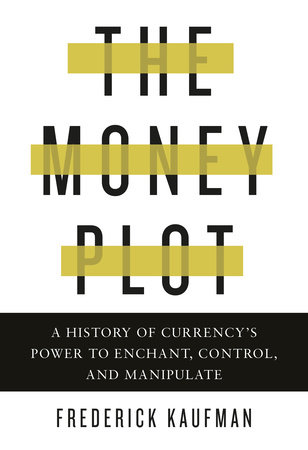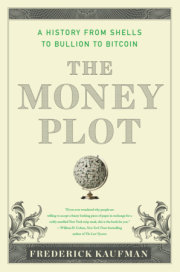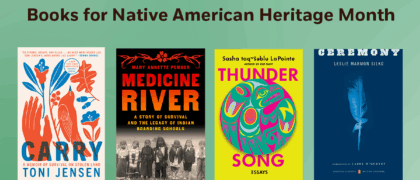BEHIND THE CURTAIN This book traces the history of two activities we generally consider to be different — exchanging money and telling stories — to show how they are the same. Chapters follow parallels in the growth and development of each. Thus we have the money plot, at the core of which resides the most compelling symbol ever created.
This book does not ask whether we should love or hate or even need money. The question is: What drives our belief in this thing called money? The answer has to do with the nature of symbols, and why humans thirst for them.
When economist John Maynard Keynes declared in his 1924
Tract on Monetary Reform that money based upon gold was a “barbarous relic,” he was arguing that gold was simply one possible manifestation of a substance that required no specific shape. Gold was a symbol, and as such could be replaced by a variety of other symbols. The form that money assumed was accidental. Money not made of gold was still money.
The symbolic nature of money — that is, the fact that money can inhabit any number of material configurations and remain money — was itself not part of the Keynesian theory. But without Keynes’ embrace of money as a symbol there could have been no theory, much less Keynesian practices such as deficit spending, whereby a sovereign state may pay for anything it wants or needs with money it prints, money that symbolizes no more and no less than its own sovereign power. A dollar, for example, embodies nothing but the “full faith and credit” of the United States. Thus is a dollar symbolic.
When it comes to money, symbols are useful. That is why Keynes was not alone among economists. If they had ever met, Adam Smith and Karl Marx would have soon discovered that when it came to theories of prices, costs, wages, and profits, they disagreed. But, along with Keynes, both would have readily consented to the fact that even as money possessed an extraordinarily practical capacity to influence a wide variety of very real, non-metaphorical things, money itself was metaphorical. Money’s influence and the effects of its dominion may have been disputed, but there was no debating the fact that a dollar or a pound or a mark were placeholders, symbolic building blocks for what the great economists believed to be much larger concerns. Those larger concerns became the business of illustrious economic schools of thought that arose in the wake of Smith’s ideas about free markets and Marx’s ideas about class struggle and proletarian revolution. Of course, it is perfectly understandable that the economists who came up with the most enduring and influential theories were not always as interested in studying the symbolic core of their systems as they were in its pervasive effects. Perhaps because so many economic subjects have been so bitterly disputed, the artifice that lies at the bottom of them all has been lost in the shuffle. The following pages turn the tables. Instead of surveying the far-reaching implications of this or that school of economic thought, this book will prioritize the symbolic bedrock.
Which is most definitely not to say that this book emerged without the influence of economic thought. The approach deployed throughout is in many ways indebted to the cultural insights of the Hungarian economic historian Karl Polanyi, who in 1944 — the year the Bretton Woods Agreement made the United States dollar the world’s preeminent currency — published a book called
The Great Transformation, followed thirteen years later by
Trade and Market in the Early Empires, written with a group of colleagues and followers. In these books, Polanyi drew on crosscultural anthropology to investigate the history of economies that had thrived before there were markets as we have come to know them, finding that something very much like money had existed long before coin and bill.
What we call money, what we consider finance, and whatever theory we propose about the economic system as a whole — all of these reflect our moment in time. Which is another way of saying that money conforms to the fictions of the age, whether those fictions go by the name myth, religion, historical narrative, literary masterpiece, or digital meme. For an economic philosophy, just like a social, political, or religious philosophy, can hold sway only as long as we believe the story it tells. A dollar without full faith and credit is a failed dollar. Another way of putting it is that the history of money, while closely related to the history of economics, is not the same thing. The history of money is a history of symbols, while the history of economics is a history of what we can do and have done with those symbols.
A symbol lies behind economics. But what lies behind the symbol? Since the moment someone declared that a bead was part of a story about something more than a bead, and the bead subsequently transformed in the listener’s imagination from dross material to an amulet imbued with spirit and value, it has been the person who created, explained, and promulgated the symbol — that is, the storyteller — who has directed the show. The man who defines the meaning of the symbol is the man behind the curtain. Today, that curtain may be a digital firewall behind which lie the untold opulence of Amazon and Facebook, it may be the unbreakable code of a cryptocurrency, or the hopelessly baroque protocols of an index fund behind which reside retirement funds worth trillions. It may be the closed-door ruminations of the Federal Open Market Committee of the Federal Reserve as central bankers decide interest rates on billions of United States Treasury bills, or how to inject trillions into an economic system in need of support. The goal of this book is to pull back the curtain, crack open the doors, decrypt the encryptions, and lay bare the bones of the stories and storytellers that lie at the foundation of the symbol system known as money.
Over the past several millennia a great deal of human desire has been embedded within money — be the currency an armband fashioned from polished shells, an overflowing silo of wheat, a herd of goats, a bevy of concubines, an electronic hoard of Bitcoin, or the United States dollar. And just as striking as the extraordinary mutability of money has been the fact that certain basic human desires abide no matter what social, political, religious, or economic system may prevail. And human desire, which the American poet Wallace Stevens once called “the motive for metaphor,” knows no economic school.
{1} THE SHELL GAME Words are what they aren't. The word “tree,” for example, has virtually nothing in common with that massive amalgamation of roots, branches, and leaves. Words don’t reflect reality so much as they reduce it to a more manageable, human scale. They give us a measure of control, and on this fundamental level the motive for turning the world into words coincides with the motive for turning the world into money.
About 65,000 years ago,
Homo sapiens created the bead. The earliest were excavated in the 1980s along the coastal hinterlands of Kenya. Each measured half the circumference of a penny, and the parallel lines, dots, and hash marks that adorned them led archeologists to suspect they must have communicated an important message. They conjecture that the cave dwellers who made and marked them believed the beads possessed secret powers, so that those who wore them next to their bodies might not only gain status among their peers, but might decrease their exposure to risk and increase their good fortune.
The technical word used to describe such beads is
apotropaic, which indicates a magic figure or incantation meant to avert evil. The word descends from the Greek word for turning toward or away from something else —
trópos — which is also the root of the word
trophy and for figures of speech such as
metaphor, which in their own way turn one thing into another. That is why metaphors are also known as
tropes.
Money averts evil. It decreases our exposure to risk. It keeps us clothed, sheltered, and safe. Not only does money deliver rank and standing, it is a way to guarantee that our hard-earned status will continue into the future. This is why anthropologists concluded that those first beads were elements of a much more complicated story than ornamentation. They were a form of risk aversion, an early model of insurance.
The epicenter of the first great financial crisis of the twenty-first century was a failure of much more modern risk aversion mechanisms. The crisis had bubbled up not from panic in the stock market nor a loss of faith in bonds, not from an insolvent bank nor surging gold nor tanking oil nor amber waves of rotting grain. The crisis had emerged from a maze of wagers and counterwagers about the future, bets bundled within a multinational Goliath — an insurance company. It was the imminent collapse of AIG that sparked global waves of fear and dread about everybody’s money.
Money has long been synonymous with anxieties about the future, and insurance has been a traditional way to manage the angst. Before there was the Dow and NASDAQ, before there were silver groats and bronze denarii, before there was a bustling slave trade and an active foreign exchange market in the ports of Benin, before the itinerant merchants of medieval Europe set up shop in one Champagne fair after another, and before there was canoe trade up and down the Rhine, the Thames, and the thousand islands of Melanesia — that is, back in the epic old days of archaic prehistory when it was man versus everything else in the world — there was insurance, and it could be strung around your neck.
Unlike modern insurance products, bead insurance was perhaps more spiritual than statistical. The world was never a safe place, and amulets and ornaments such as armbands and collars suggest narratives in which charmed objects protect and strengthen those they adorned. Such emblems and tokens were typical trappings of mythical figures as they floated across oceans and dueled on battlefields, from the impregnable armor of Achilles to the mail shirt of Beowulf. Caps of invisibility are common accoutrements, alongside a variety of musical instruments, from the lyre of Orpheus to Gabriel’s horn. Merlin and Prospero had their staffs, Hercules and Thor their clubs, Eros his bow, Aphrodite her girdle. Such items come in handy when heroes traverse the land of shadows and other fraught landscapes — be the physical form of the talisman a ring, a flaming sword, the tooth of an ancestor, a relic of the true cross, gold coins struck with the profile of a river god, an electronic code that secures a proprietary pathway through the internet, or a necklace strung with beads. All of which is to say that even if the prehistoric beads from the coastal hinterlands of Kenya possessed many key attributes of money, they did not conform in every way to the modern definition.
They were not stores of value, media of exchange, or units of account in the way we think about such things. They were not the same sort of money as the money that populates classical economics. They were more deeply embedded in our imaginations and psyches than that.
The most famous classical economist is the Scottish philosopher Adam Smith. In 1776 he published his masterpiece,
The Wealth of Nations. As the American colonists were declaring their independence from England and trying to figure out how their new country might create currency from scratch, Smith suggested an origin story for all money — a distinctly nonmagical, non-metaphorical, non-spiritual, and non-literary story. He did not declare that pounds and francs had been anchored in beads or rings endowed with the power to ward off evil. Instead, he supposed that the first money emerged as a shortcut to truck, barter, and exchange — “the principle which gives occasion to the division of labor,” and consequently drives mankind.
According to Smith, before the revolutionary conveniences of coin and credit, a primitive potato farmer might have had to lug twenty sacks of fingerlings and russets around town in order to trade his sole unit of value and medium of exchange for the cooking oil, firewood, and cast iron pan required to make himself a batch of home fries. Smith speculated that such extreme inconvenience led to the creation of the ingenious, beneficial, time and labor-saving device known as money. To the late eighteenth-century mind swimming in a rising tide of manufacturing, markets, and self-interested shopkeepers, Smith’s theory made a great deal of sense, and over the years the idea that money evolved from barter gained wide popular acceptance. Unfortunately, Smith’s theory has never been bolstered by a shred of evidence, as no example of a pre-currency barter economy has ever been discovered anywhere on earth.
Quite the opposite, in fact. The late nineteenth-century anthropologists and ethnographers who left the research university behind in order to conduct field studies among what were then perceived to be the “primitive tribes” of Africa, Asia, Australia, and Oceania reported at length about the role that symbolic media played in a wide and complex variety of rites, rituals, ordeals, and ceremonial sequences such as exorcisms, gift giving, inheritances, marriages, oathtaking, punishments, ransoms, rewards, entry fees for secret societies, and as payments for corpses on their journey to the land of the dead. If the first anthropologists who set foot on the shores of New Guinea thought they were going to discover bilateral exchanges of, say, candle wax for cassava or a dog for ten pairs of slippers, they were likely surprised to discover an economy of bones, seeds, shells, skins, and polished rocks that appeared to possess symbolic value akin to crowns, pesos, and shekels. Money — or something that acted very much like it — had been around long before markets.
This prehistoric presence of money may help explain why barter economies have only been found in post-currency environments, in which the concept of symbolic equivalencies and exchange has already been well established. Barter economies are economies not of first but of last resort, such as wartime economies in which currencies have become virtually worthless and scarcity of food and basic supplies become the rule, or prison economies with their highly constricted trade in candy, cigarettes, drugs, and weapons.
Truck, barter, and exchange could not elucidate the nonmarket money systems that late nineteenth and early twentieth-century European ethnographers and anthropologists discovered among non-European indigenous groups. Nor could it explain why the hunter-gatherers of neolithic Kenya created those first beads etched with perplexing signs and symbols that predate written alphabets by tens of thousands of years.
One clue about the meaning and origin of those beads emerged from a chemical analysis, which revealed that their mineralogical makeup — almost entirely calcium carbonate — was identical to that of the shells of the largest birds on earth, the black-necked African ostrich. Before they were beads, the beads had been ostrich eggs! Which presented yet another mystery: Why expend so much time and energy sanding, drilling, and polishing the shattered fragments of an ostrich egg? No doubt, ostrich meat, ostrich leather, and ostrich feathers were more valuable than the shells. Why were these broken chips of calcium chosen among all other materials to ward off evil and promote good fortune? How did their shape (a small circle with a hole in the middle) come to be replicated around the world, from the first copper coins of Asia to the wampum of the Americas?
Archeological evidence further indicated that beads were not the only thing these neolithic people were making out of their ostrich eggs. If kept intact, each enormous egg could hold more than a quart and a half of liquid, as the hard, nonreactive calcium carbonate crusts had an average thickness of two millimeters. Before they were fashioned into beads, the ostrich eggs had been used as containers. That which could hold something valuable — rainwater, nuts, berries, or whatever else someone might have kept in an empty ostrich egg — had been transformed into something valuable in and of itself. The material which could serve as an insurance policy against hunger and thirst — the storage container — had been fragmented into an amulet that could mitigate all perils and hazards. That which could contain water or berries in order to alleviate the specific risks of thirst or hunger had transformed into a symbolic remedy for risk in general.
Karl Marx famously defined money as “the general equivalent,” and on this point the capitalists agree. Traders, financiers, and other adepts of monetary mutability can transform their money into any currency they wish, not to mention a commodity like grain or heating oil, which can in turn translate back into money. Moreover, money can compensate for a wide variety of damages and protect from all manner of liability. Money is so generally able to replace one thing by another and change one thing into another that
change is another word for money.
By the end of the twentieth century, some of the most technically advanced quantitative adepts of mathematical finance had taken money’s shapeshifting ability to an extreme. They realized that they could use the tools of calculus and statistics to capture shifting
feelings about money. Like ostrich eggs that could contain grain or water, the formulae of the socalled mathematical “quants” captured emotional states that could drive a market up or down, as investors either bought with confidence or sold out of fear. And, much like beads, these mathematical measures of confidence and panic would eventually be priced and traded themselves.
Still, a basic question about those ostrich eggs remained unexamined: What was the process whereby the
container of material value could assume the value of the material it contained? How did an ostrich egg, which could hold food and drink, become modern money, which can hold just about anything? In short, how was money born?
Copyright © 2020 by Frederick Kaufman. All rights reserved. No part of this excerpt may be reproduced or reprinted without permission in writing from the publisher.





